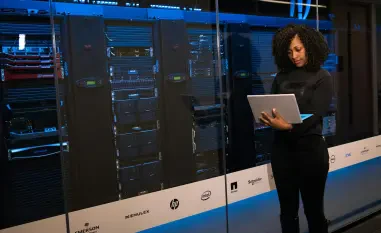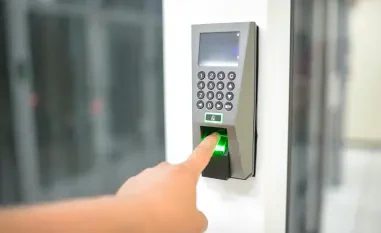In an era where technology evolves at a breakneck pace, educational institutions face an unprecedented challenge in safeguarding their physical security against consumer-grade hacking tools that are both powerful and easily accessible to the public. One such device, known as Flipper Zero, has emerged as a significant threat to campus access control systems. Priced at around $200, this pocket-sized gadget allows virtually anyone, regardless of technical expertise, to clone ID cards in mere seconds, granting unauthorized entry to dormitories, dining halls, and academic buildings without triggering alarms. Reports of misuse are already surfacing on campuses, with individuals exploiting these tools to access restricted areas or steal meal credits. This alarming trend underscores a critical need for schools to address vulnerabilities in outdated security infrastructure and adopt modern solutions to protect students, staff, and assets from such sophisticated yet accessible threats.
1. Understanding the Flipper Zero Threat
The rise of consumer-grade hacking devices like Flipper Zero represents a new frontier in physical security risks for educational institutions. Unlike traditional threats that involve physical tampering, this gadget exploits the digital weaknesses of legacy access systems. With just a brief wave near an ID card—often hanging from a lanyard or tucked in a backpack—the device can capture credential data and replicate it almost instantly. Such capabilities enable unauthorized access to sensitive areas without leaving a trace, posing a direct challenge to campus safety. The affordability and ease of use of Flipper Zero have transformed it from a niche tool for hobbyists into a mainstream concern, amplifying the urgency for schools to recognize and respond to this emerging danger before it escalates further into widespread security breaches.
Beyond theoretical risks, real-world incidents highlight the tangible impact of these devices on campuses. Students and unauthorized individuals have been reported using Flipper Zero to enter dorms they are not assigned to, misuse meal plan credits, or access restricted facilities. These actions not only compromise individual safety but also erode trust in the institution’s ability to protect its community. The stealthy nature of these hacks—often undetectable by standard security measures—means that many breaches may go unnoticed until significant damage is done. Addressing this issue requires a clear understanding of how such tools operate and why outdated ID systems are particularly vulnerable to exploitation, setting the stage for proactive defense strategies.
2. Exploiting Proximity Card Vulnerabilities
At the heart of the Flipper Zero threat lies the reliance on legacy access technologies, such as low-frequency proximity (prox) cards, which many campuses still use. These cards, designed decades ago, lack encryption and authentication, making them easy targets for modern hacking tools. Flipper Zero, a compact and open-source device, was initially created for developers to test wireless systems. Equipped with multiple antennas, it can interact with various technologies, including access cards. Its open-source nature allows for easy software modifications, contributing to its widespread adoption. When used maliciously, the device can read raw credential data from a card, emulate it to trick access readers, and even write the data to a blank card for cloning—all within seconds and often without the cardholder’s knowledge.
The simplicity of this process exacerbates the risk, especially on campuses where ID cards are used daily. The steps are straightforward: first, the device captures data by powering the card’s chip through its antenna; second, it mimics the card by replaying the data to a reader; and third, it duplicates the credentials onto a blank card, creating a functional replica. As more individuals discover the ease of using such gadgets, the potential for unauthorized access grows exponentially. Schools that continue to depend on unencrypted prox cards remain exposed to these exploits, highlighting the pressing need to transition away from outdated systems. Delaying upgrades only increases the likelihood of security breaches that could compromise the safety of students and staff alike.
3. Security Risks of Unencrypted Access Systems
The persistence of unencrypted access systems, particularly prox cards, poses significant risks to campus security. These credentials, widely used due to their low cost and compatibility with existing infrastructure, were not designed to counter modern threats. Lacking encryption and robust logging, they offer little protection against cloning or unauthorized use. Cloned cards appear legitimate in system logs, making detection nearly impossible without manual ID checks or surveillance footage review. This vulnerability allows intruders to gain access to secure areas such as dorms, research labs, or administrative buildings, often without raising any immediate suspicion, thereby undermining the overall safety framework of educational environments.
Specific threats arising from these weaknesses are multifaceted and severe. Unauthorized individuals can enter restricted facilities, impersonate students or staff, and misuse stored-value systems like meal plans or printing credits. Access to sensitive areas, including research labs with valuable data or equipment, becomes a real concern. Despite these dangers, many institutions hesitate to upgrade due to the high costs and complexity of replacing hundreds of card readers across campus. Additionally, some vendors may downplay the risks or overstate compatibility with newer technologies, further delaying necessary updates. However, clinging to outdated systems is no longer a viable option as the security landscape continues to evolve with increasingly sophisticated threats.
4. Steps to Modernize Campus Access Control
To combat the risks posed by devices like Flipper Zero, educational institutions must take decisive action to update their access control systems. Three key steps can significantly reduce exposure: First, evaluate the current setup by auditing all locations using prox or magstripe cards, with particular focus on multi-tech readers that default to prox and are susceptible to downgrade attacks. Identifying these weak points is crucial for understanding the scope of vulnerability across campus facilities. Such an assessment provides a clear roadmap for prioritizing upgrades and ensures that no area is overlooked in the transition to more secure technologies, laying the groundwork for comprehensive protection against unauthorized access.
Second, implement gradual improvements by transitioning to mobile credentials or encrypted solutions that resist cloning. Schools should manage their encryption keys to minimize risks in the event of a widespread breach, ensuring that attacks require highly targeted efforts. Third, enhance reader technology by installing systems that support secure credentials and disable prox fallback. Adopting protocols like Open Supervised Device Protocol (OSDP) enables encrypted communication and remote management, reducing maintenance costs and time, especially for large campuses with numerous readers. This phased approach allows institutions to balance budget constraints with security needs, ensuring a sustainable path to safeguarding their environments against evolving hacking threats.
5. Advantages of Upgraded Access Control Systems
Upgrading access control systems offers benefits that extend far beyond preventing card cloning by devices like Flipper Zero. Modern encrypted systems drastically reduce the risk of unauthorized access to individuals, property, and sensitive data, creating a stronger foundation for campus security. By moving away from vulnerable prox cards, schools can better protect dormitories, academic buildings, and research facilities from potential intruders. This shift not only addresses immediate threats but also builds a more resilient infrastructure capable of withstanding future challenges, ensuring that safety remains a top priority for students, faculty, and staff in an increasingly digital landscape.
Operationally, contemporary access control architectures streamline processes through remote configuration and updates, minimizing manual labor and system downtime. Digital credentials provide flexibility, allowing quick reissuance or access adjustments during security incidents without requiring physical hardware changes. Moreover, upgrading aligns campuses with evolving regulations that mandate encrypted communication and credentials, while preparing them for seamless integration of new technologies. This forward-thinking approach avoids the need for costly overhauls down the line, offering both immediate security enhancements and long-term cost efficiencies that benefit the entire institution.
6. Building a Resilient Defense Against Hacking Threats
The threat posed by Flipper Zero and similar devices is no longer a distant concern but a present reality that demands immediate attention. These tools signify a fundamental shift in how physical security systems, especially those reliant on unencrypted credentials, can be compromised in everyday scenarios. With hacking devices becoming more prevalent on college campuses, access control methods must be thoroughly reevaluated to address current vulnerabilities. Ignoring these risks could lead to significant breaches, undermining the safety of students and staff while damaging the institution’s reputation. A proactive stance is essential to stay ahead of evolving threats in the security landscape.
Adopting a strategic, phased approach is key to building a resilient security framework. This begins with auditing existing systems to identify weaknesses, followed by the adoption of secure technologies and the gradual phasing out of prox cards. Such measures shift campuses from a reactive posture to one of preparedness, capable of mitigating risks effectively. Ultimately, upgrading access control isn’t just about protecting data or entry points—it’s about preserving trust. Ensuring safe work environments for faculty, secure residences for students, and robust protection of institutional assets are paramount goals that start with recognizing and addressing the flaws in legacy systems.
7. Securing Tomorrow’s Campuses
Reflecting on the urgency to tackle vulnerabilities in legacy access systems, it has become evident that taking action is a pivotal step toward achieving lasting campus safety. The insights shared by Jeff Buzan, director of product at Wavelynx, underscore the importance of moving beyond outdated technologies to protect educational environments from sophisticated threats like Flipper Zero. Institutions that prioritize audits, embrace encrypted credentials, and modernize reader infrastructure demonstrate a commitment to safeguarding their communities. Looking ahead, the focus must remain on continuous evaluation and adaptation of security measures to anticipate future risks. By investing in scalable, secure systems, campuses can not only address current challenges but also lay a foundation for resilience against emerging hacking tools, ensuring a protected and trusted environment for all.













